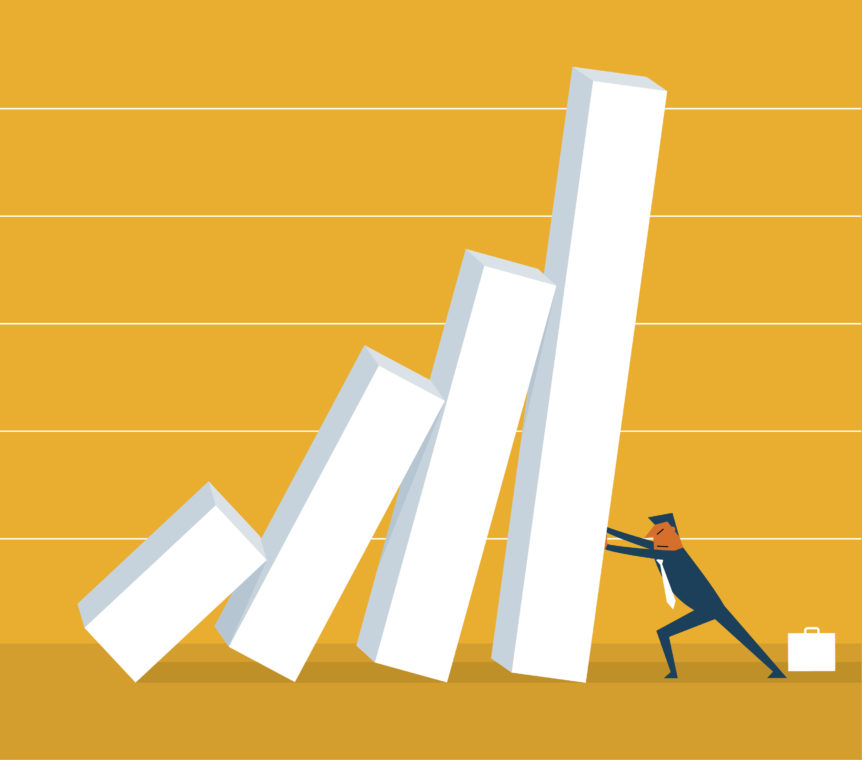Americans have been talking a lot about the “fake news” phenomenon lately, but fake news has been part of the investment world for some time, on TV, online and at cocktail parties. How many “hot stocks” and “can’t fail strategies” have you heard about over the years? Maybe the idea that some stock guru has “the secret to beating the market” is as mythical as a unicorn.
According to Dalbar, an independent research firm that has been studying investment performance and investor behavior since 1976, there is evidence that trying to beat the market does investors more harm than good. Their 22nd Annual Quantitative Analysis of Investor Behavior (2016) found that, for the 20-year period ending on December 31, 2015, the average equity mutual fund investor’s annualized return was a mere 4.67%, far less than the performance of the market overall. In contrast, the Standard & Poor’s 500 Index, often used as a benchmark for the whole stock market, produced a 20-year annualized return of 8.19%. That’s a difference of 3.52 percentage points, which may not seem like much. But looked at another way, an annualized return of 8.19% is 75% more than an annualized return of 4.67%, year in and year out, for 20 years.
Dalbar researchers analyzed investor behavior to try to understand why this discrepancy was so large. Here’s what they found:
- Investors lack patience; many try to time the market. Rather than “buy and hold,” they follow a “buy and fold” strategy, exiting a fund, stock or bond when they think they can find better returns in a different fund, stock or bond. The average investor switches out of investments after about four years. That is short-term thinking. And it doesn’t pay off.
- When it comes to buying low and selling high, investors have historically failed. We simply can’t help it. From a behavioral point of view, we are “loss averse.” During the past two major market downturns, 2000-2003 and 2007-2009, investment in money market funds (considered a safer harbor) soared. This habit of selling during market drops has historically resulted in significantly lower returns as investors tend to be slow to reinvest. They hang on to the cash they got when they sold at a loss, and only think it’s “safe” to get back into the market when prices are high again. To the contrary, the greatest profits are to be made when markets begin to recover-and it’s hard to pinpoint that moment.
- A diversified portfolio tends to mitigate risk and stabilize returns, but not during market meltdowns.
What the Dalbar study makes clear is that investors can be our own worst enemies if we give in to our instincts rather than taking a disciplined approach to investing. Two other top factors are paying excessive fees and not saving enough.
The remedy? One route to improved results is to find the right financial advisor — not the one who promises to beat the market, but the one who is committed to a disciplined investment approach, protecting clients from hasty decisions, urging them to save as much as possible, and helping to keep advice and investment fees at a reasonable level.
Source: DALBAR’s 22nd Annual Quantitative Analysis of Investor Behavior 2015 For period ended: 12/31/2015
Disclosure: The views expressed herein are exclusively those of Efficient Advisors, LLC (‘EA’), and are not meant as investment advice and are subject to change. All charts and graphs are presented for informational and analytical purposes only. No chart or graph is intended to be used as a guide to investing. EA portfolios may contain specific securities that have been mentioned herein. EA makes no claim as to the suitability of these securities. Past performance is not a guarantee of future performance. Information contained herein is derived from sources we believe to be reliable, however, we do not represent that this information is complete or accurate and it should not be relied upon as such. All opinions expressed herein are subject to change without notice. This information is prepared for general information only. It does not have regard to the specific investment objectives, financial situation and the particular needs of any specific person who may receive this report. You should seek financial advice regarding the appropriateness of investing in any security or investment strategy discussed or recommended in this report and should understand that statements regarding future prospects may not be realized. You should note that security values may fluctuate and that each security’s price or value may rise or fall. Accordingly, investors may receive back less than originally invested. Investing in any security involves certain systematic risks including, but not limited to, market risk, interest-rate risk, inflation risk, and event risk. These risks are in addition to any unsystematic risks associated with particular investment styles or strategies.
Share this Post

